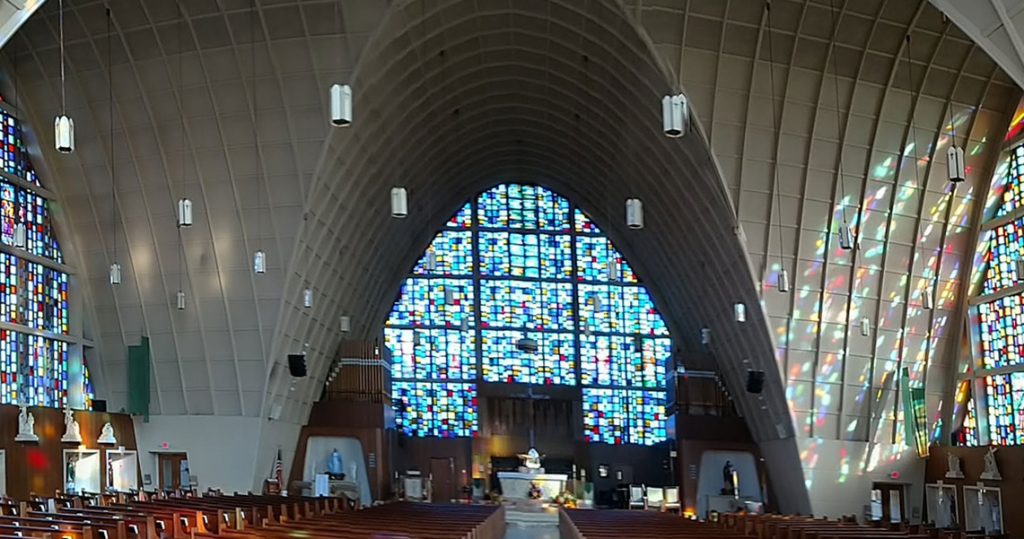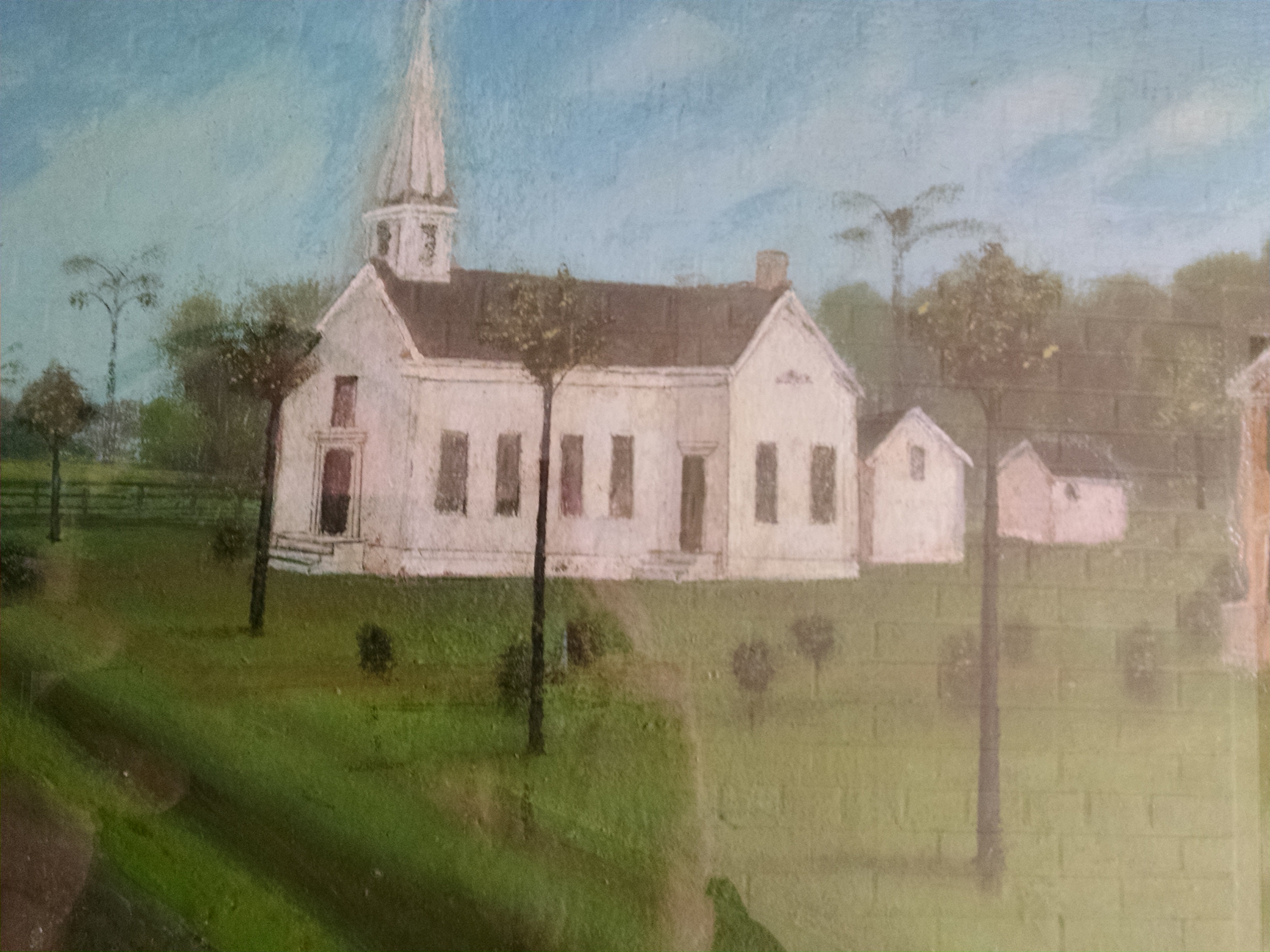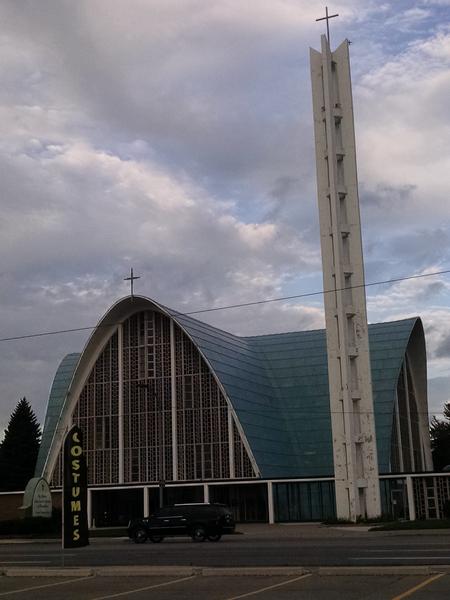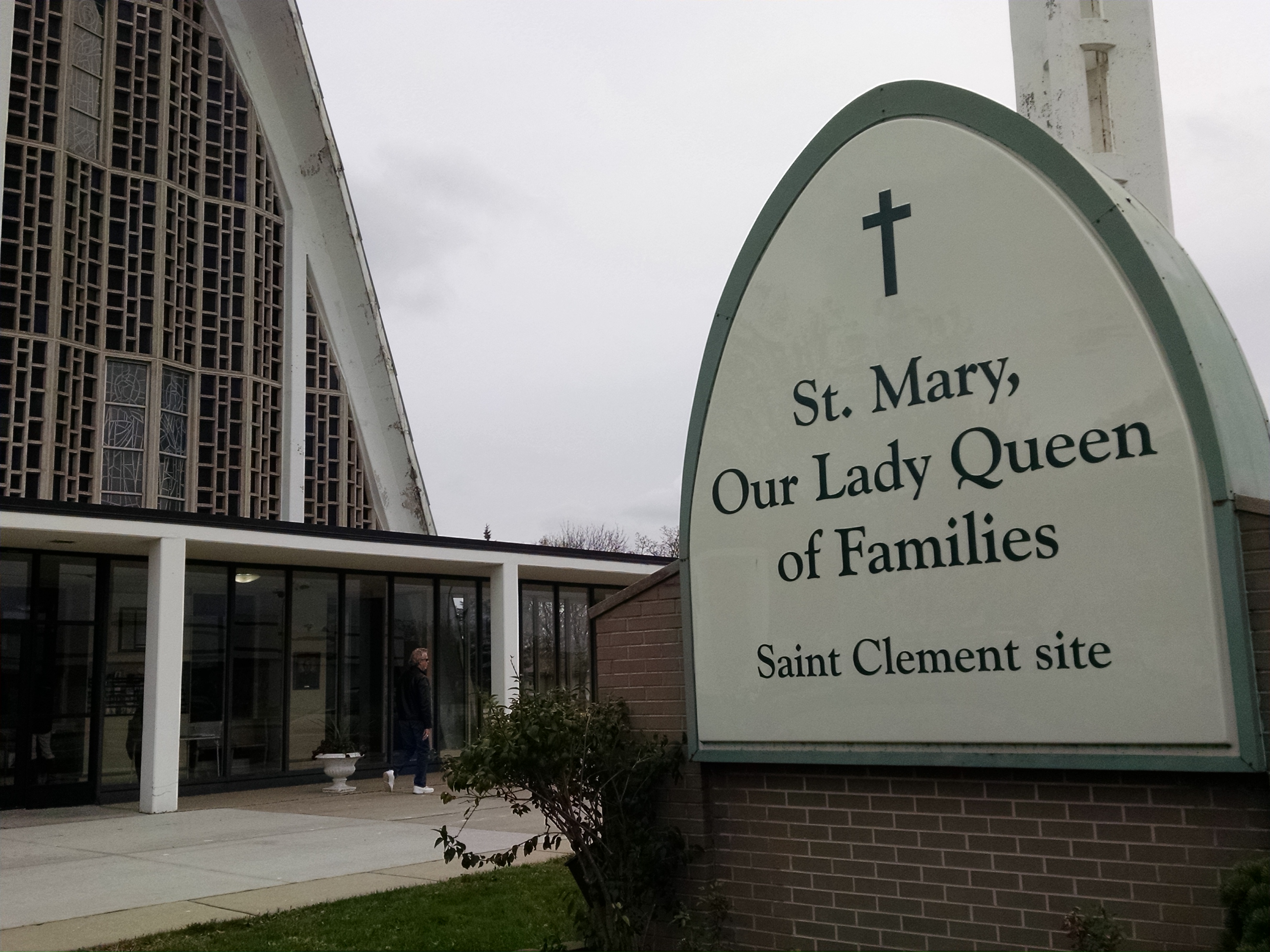Historic Center Line Church, Known for its Radical Design, Could be Closed or Sold
One of the more noticeable features in the city of Center Line is the arching green roof of a church. It’s a historical site. But cost-considerations could soon reduce it to only a page in the history books of the city.

Organ music floats over the congregation gathered for a recent Sunday mass at Center Line’s St. Clement Catholic Church.
Parishioner Kelly Kannan is heading for an exit, as she says she has for the past two decades. The 74-year-old says all five of her children and her grandchildren were baptized here. But Kannan’s aware the archdiocese overseeing the parish says it must close either St. Clement or another nearby church.
“I don’t want the church to go away. It’s broken everybody’s heart.” – Kelly Kannan, St. Clement parishioner
She prays it won’t be St. Clement.
“It’s a beautiful church, everybody’s friendly,” Kannan said, her voice stained with tears. “Beautiful church, I don’t want the church to go away. Stay here. [The thought of it closing,] it’s broken everybody’s heart.”
Crossing the Lines
101.9 WDET’s Crossing the Lines series explores what unites the Metro Detroit region and what divides it.
Why Center Line? The city is completely surrounded by Warren, and can often be subsumed by its larger neighbor in the minds of metro Detroiters. In addition, it is a community with a deep history as well as a significant shift in diversity over the past 20 years. See more coverage

The Pioneer Parish
It’s actually the third church built on what is now a state historical site dubbed the “pioneer parish.”
The church began as a small wood frame building in 1854. It was founded by German, Belgian and French Canadian farmers who were mostly Catholic and hard-pressed to travel all the way to Detroit for mass on roads that were treacherous or, in some cases, non-existent.
A growing number of businesses congregated around the spiritual and cultural meeting place, attracting more people to the church. So many that by 1881 it was replaced with a larger building made of wood and bricks. It was a place where memories were made.
“My great, great grandfather helped lay the brick on that church. And his brother did the plastering work and some of the frescos inside of that church.”
Mike Grobbel is the president of the Historical Society of Center Line. Grobbel says he can still hear his grandfather climb up inside the bell tower of a church that, again would soon need to be replaced.
“I managed to get up there a couple of times with him to watch him ring the old bells, watch the pigeons fly,” Grobbel chuckles. “And I could see from that it was all wood and it could be a real fire trap if it ever went up. So I understand why they had to tear it down.”
“These arches, the sweeping lines, the use of stained glass curtain walls. So unusual. You don’t see anything like that out here in Macomb County. Or Detroit, for that matter.” – Historical Society of Center Line President Mike Grobbel

A Radical Design
By 1961 the size of the church’s congregation had far outgrown the old building. So Grobbel says the current St. Clement was designed to be different, following an edict from the priest in charge at the time who wanted as much glass on the front of the building as possible. It was a way to show passersby on the street they were welcome to enter a place where God was working within.
“It was a radical design for the time. It was featured in several architectural magazines. These arches, parabolic arches in solid form intersecting into what looks like a cross from above. The sweeping lines, the use of stained glass curtain walls. So unusual. You don’t see anything like that out here in Macomb County. Or Detroit, for that matter,” Grobbel said.
The towering stained glass windows soar some 65 feet to the ceiling of the church. There is one in all four walls of the building.They’re cared for by Aaron Rorick, who says he’s spent the past decade helping maintain the church. Rorick calls it a spiritual experience.
“It’s a devotion, it really is. When you’re here you come, you can pray, you work. It’s a job but it’s also a devotion.”
“It’s a historical marker here in the city of Center Line.” – Renee Brewer, parishioner
A Waiting Game
Mike Grobbel says the cost of maintaining those stained glass windows alone is thought to approach $10,000 annually.
About a half-dozen years ago church officials combined St. Clement with nearby St. Dorothy in Warren into a single parish.

Now officials say they cannot afford to keep both churches open. And Grobbel notes St. Dorothy has a meeting hall where the parish can host events. St. Clement in Center Line does not.
“If they decide not to use it, it would go on the market and if they could find another religious congregation that would want it they would sell it,” Grobbel said. “It could be that it might be more suitable for commercial purposes since it has got Van Dyke frontage. Somebody [may] just want to come in and raze it.”
He says a transition team will recommend what’s to become of St. Clement. And while officials have been open about the process, noting developments on a parish web site and in church bulletins, Grobbel says there are some ominous signs for the Center Line building.
“The St. Dorothy campus, the transition team meets over there. Because they’ve got the meeting hall and there isn’t one over here. And that’s sort of a thing.”
It’s a thing that seems to be always on the minds of the many families who have spent decades of their spiritual life at St. Clement. It was certainly uppermost in the thoughts of Ann Prewitt as she left a recent mass walking beside her daughter, Rene Brewer. Prewitt says St. Clement has become a member of the family.
“It’s beautiful. I’ve been coming here for 65 years,” she said.
Brewer adds that she drives from her house near the Detroit Zoo now to attend the church she’s called home for all of her life.
“I feel like it’s a historical marker here in the city of Center Line,” Brewer said. “It’s been here for a very long time. You see this church and it makes you stop to ponder it.”
Now it’s the congregants who must wonder, and wait, to find whether the church will remain as it is, become part of someone else’s religious faith or simply vanish under the wrecking ball and the bulldozer.
Support the news you love.
Here at WDET, we strive to make our journalism accessible to everyone. As a public media institution, we maintain our journalistic integrity through independent support from readers like you. If you value WDET as your source of news, music, and conversation, please consider making a gift today. Even $5 a month helps!
